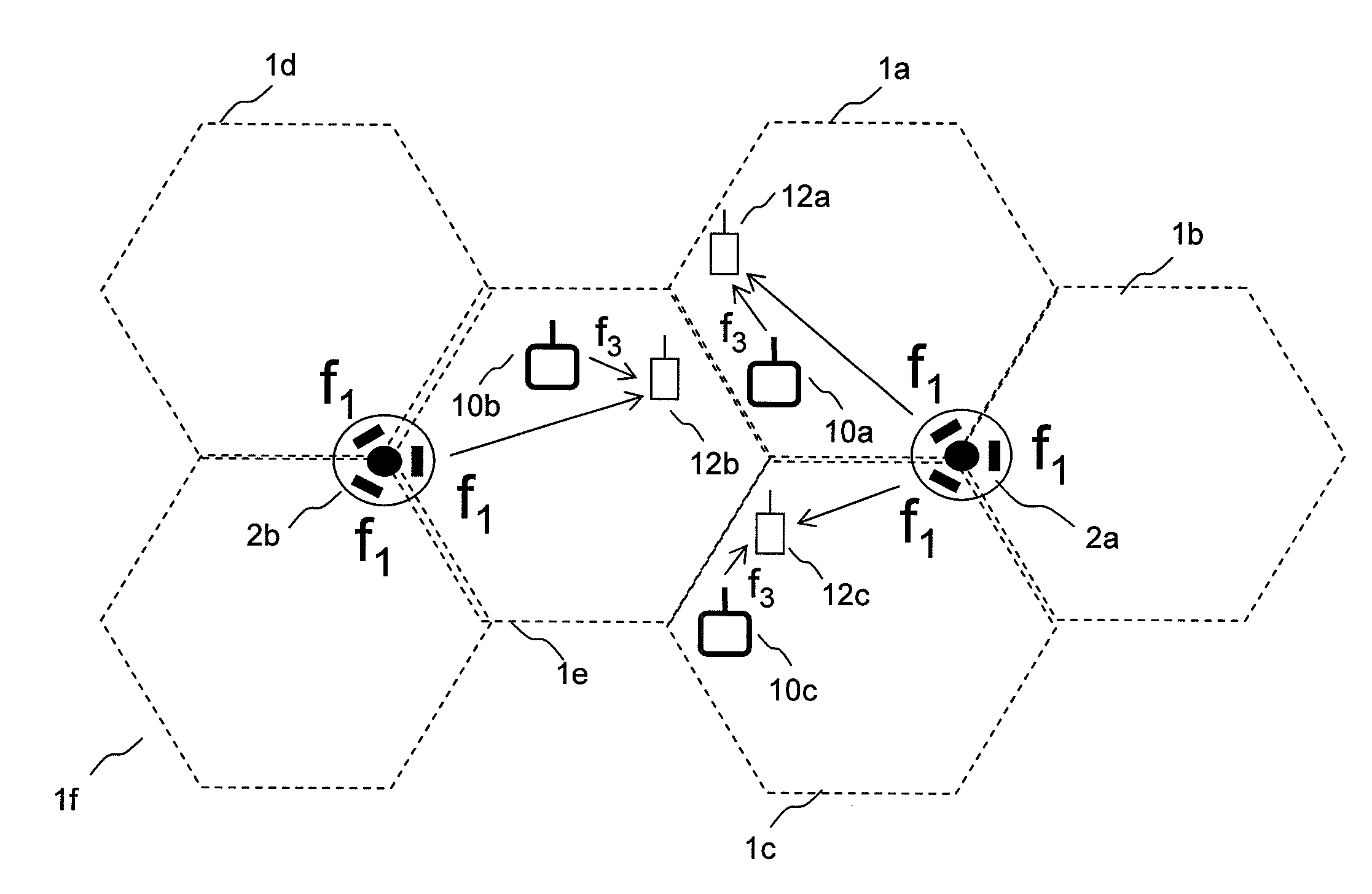Wireless system
a wireless system and wireless technology, applied in the field of wireless communications networks, can solve problems such as difficult frequency allocation, interference in other areas, and gaps in the coverage area of cellular systems, and achieve the effects of facilitating handover between base stations and relay stations, reducing interference, and reducing interferen
- Summary
- Abstract
- Description
- Claims
- Application Information
AI Technical Summary
Benefits of technology
Problems solved by technology
Method used
Image
Examples
Embodiment Construction
[0048]In general, the present invention is directed to methods and apparatus that are aimed to increase the capacity or coverage of a cellular wireless system by the use of relay stations. For clarity, the methods and apparatus are described in the context of a high speed packet data system such as IEEE802.16 (WiMax) or LTE, but it will be appreciated that this is by way of example and that the methods and apparatus described are not limited to these examples.
[0049]As a result of the problems of interference mentioned above, the potential capacity increase offered by the use of relay stations within a cellular wireless network using a conventional n=3 frequency reuse scheme is limited.
[0050]FIG. 6 illustrates a similar network to that illustrated in FIG. 5, with an improved frequency re-use scheme according to an embodiment of the invention. In contrast to conventional cellular wireless systems in which the base stations operate within a frequency re-use scheme of n=3, in the system...
PUM
 Login to View More
Login to View More Abstract
Description
Claims
Application Information
 Login to View More
Login to View More - R&D
- Intellectual Property
- Life Sciences
- Materials
- Tech Scout
- Unparalleled Data Quality
- Higher Quality Content
- 60% Fewer Hallucinations
Browse by: Latest US Patents, China's latest patents, Technical Efficacy Thesaurus, Application Domain, Technology Topic, Popular Technical Reports.
© 2025 PatSnap. All rights reserved.Legal|Privacy policy|Modern Slavery Act Transparency Statement|Sitemap|About US| Contact US: help@patsnap.com



